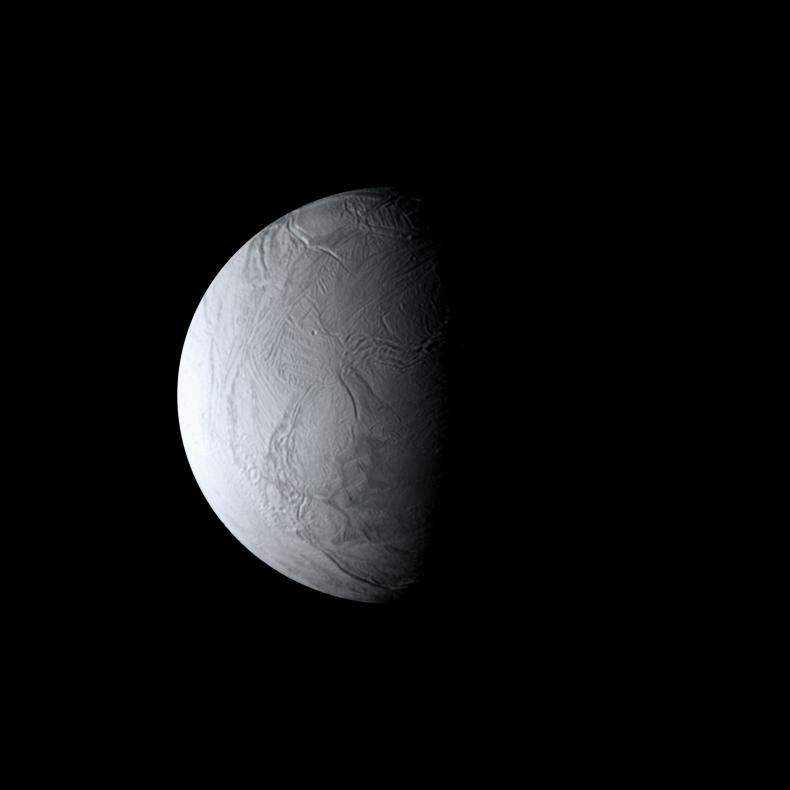White Moon

| PIA Number | PIA10473 |
|---|---|
| Language |
|
As the Cassini spacecraft sped away from Enceladus following its close August 2008 flyby, the moon's wrinkled south polar region remained in view.
The blue-green hues so apparent in false color views like Great Southern Land (obtained three hours before this image) are absent in natural-color views like this one, which approximate the scene as it might appear to human eyes. In visible light, the surface of Enceladus is almost perfectly white, and is, in fact, one of the most reflective objects in the Solar System.
Images taken using red, green and blue spectral filters were combined to create this view. The images were digitally reprojected onto a computer model of Enceladus, and aligned there, in order to account for the spacecraft's rapid motion with respect to the moon.
The images were acquired with the Cassini spacecraft narrow-angle camera on Aug. 12, 2008 at a distance of approximately 201,000 kilometers (125,000 miles) from Enceladus. Image scale at maximum resolution is 1 kilometer (0.6 mile) per pixel.
The Cassini-Huygens mission is a cooperative project of NASA, the European Space Agency and the Italian Space Agency. The Jet Propulsion Laboratory, a division of the California Institute of Technology in Pasadena, manages the mission for NASA's Science Mission Directorate, Washington, D.C. The Cassini orbiter and its two onboard cameras were designed, developed and assembled at JPL. The imaging operations center is based at the Space Science Institute in Boulder, Colo.
For more information about the Cassini-Huygens mission visit http://saturn.jpl.nasa.gov . The Cassini imaging team homepage is at http://ciclops.org .
Credit: NASA/JPL/Space Science Institute
